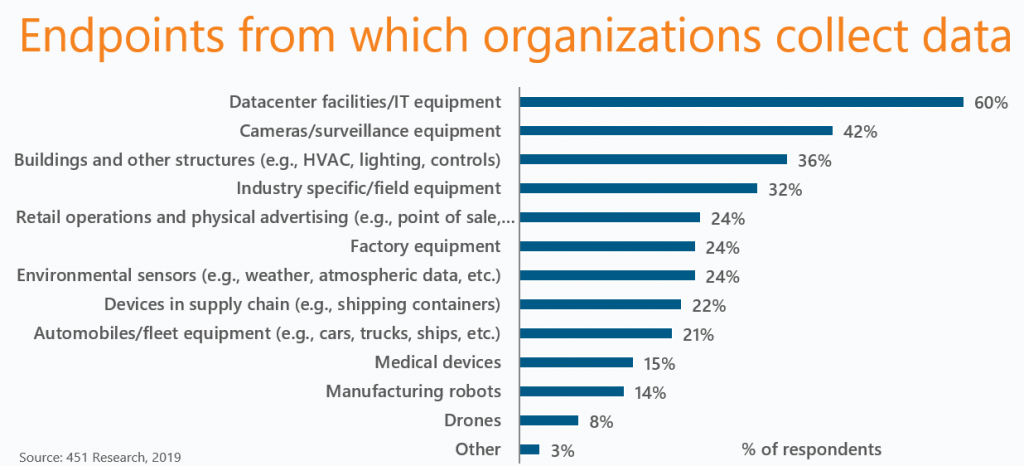
In the workplace, we look to management and leadership to increase employee engagement and productivity.
But thanks to the Internet of Things (IoT), we may start looking somewhere else for those things. ‘Smart buildings’ packed full of automation technologies are leading to innovations that promote employee engagement and productivity, along with their original benefits of promoting energy efficiency and cloud connectivity.
Smart-building technology has created an environment where employees are active participants in a collaborative, productive and sustainable workplace.
Smart Building Tech is the Heart of IoT
Smart-building technologies include cameras and surveillance equipment, building lighting, HVAC systems and controls, and personal devices like smartphones, tablets and wearables. These are some of the first stops for organizations looking to start IoT initiatives.
A recent 451 Alliance survey found that smart technologies were second only to datacenter IT equipment when it comes to IoT data collection.

Digital Assistants and AR
Advances in employee productivity are coming from two main smart-building technologies.
First, there are voice-enabled ‘digital assistants,’ such as Amazon’s Alexa or Microsoft’s Cortana. Looking forward, these assistants will become the primary user interface for many smart-building features. For example, users can command Alexa to manage features such as lighting and projectors in a meeting room, or use Cortana to facilitate video conferencing between locations.
The second productivity booster will come from augmented reality. In many open-plan offices, noise and peripheral activity can be a huge distraction. Poly, a company created through the merger of Plantronics and Polycom, has announced a solution for this using aural isolation and immersive visuals that reduce distractions, using advanced analytics to identify which areas require mitigation and promote employees’ focus.
The Immersive Virtual Workspace
Similar technologies are being rolled out to support employee engagement. The ‘immersive virtual workspace’ is a group of technologies that supports collaboration, unified communication, content creation and connectivity.
For example, Cisco’s WebEx Assistant platform has recently announced new features that include intelligent framing, speaker tracking, and noise detection and suppression to optimize the user experience in team meetings and foster employee engagement.
The next time you walk into your office, keep all these features in mind. The environment you walk into is becoming a lot more than just a simple work space; it’s morphing into an organizational partner that works to increase your productivity and engagement at every step.
Want insights on IoT trends delivered to your inbox? Join the 451 Alliance.

